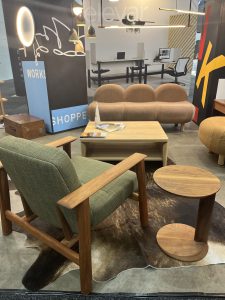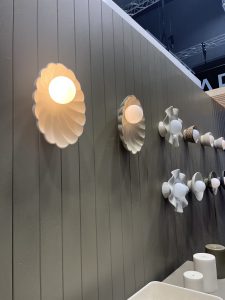Where in Australia can you go to witness innovative concepts and creations from architects, designers, and industry professionals? The ICC, Melbourne – home to the much-anticipated 2023 Design Show Australia and ArchiBuild Expo.
Taking place from 15 to 17 June, it’s the largest exhibition of its kind and features a diverse range of displays. The resounding theme this year? ‘Sustainability’.
A Move Towards an Eco-Conscious Future
Of course, a move towards a more eco-conscious future is on many a company’s agenda and the event seamlessly integrated nature into a raft of striking, architectural designs. A chorus of green spaces, including the Sustainability Pavilion, graced the exhibit hall, embracing all that’s great and good about biophilic design.
Flying the flag for biophilia here at Interface, we were keen to see such innovative designs, all of which perfectly portrayed the connection between humans and the natural world.
Emphasising the positive impact of verdant environments on our wellbeing and the planet we call home, we were proud to champion our own custom carpet tile, designed especially for the sustainability pavilion and taking visitors back to nature. Read on for our key insights from the event…

Transforming Heritage through Adaptive Reuse and Retrofitting:
In an era where preservation and sustainability walk hand in hand, ‘adaptive reuse’ and ‘retrofitting’ secured the spotlight at the event.
A diverse set of speakers made up a packed programme of sessions across the design show, with Aidan Mullan, Interface Australia’s own Sustainability Manager, a featured panellist. Focusing on ‘Sustainable Building Design for Australia’s Changing Climate?’, he was part of a panel which also included Ranae Gasmier from JLL Australia, and Krista Milne of the City of Melbourne.
Discussions explored a trend that sees designers breathe new life into existing structures, thereby preserving architectural heritage and minimising construction waste, with Ranae pointing out that “The greenest building is the one that has already been built.”
Nostalgia in Furniture Design
Meanwhile at the expo, exhibitors showcased a reverence of the past.
Reimagining iconic designs from bygone eras and affording them a contemporary twist, everything from mid-century modern pieces to vintage-inspired textiles and retro colour palettes transported visitors to an era awash with charm and character.
The trend exemplified the Australian design community’s appreciation for designs that stand the test of time.
Sculptural Forms for Everyday Products
Innovation certainly knows no bounds – and nowhere was that more evident than at the show when everyday products came alive via captivating sculptures.
With designers turning functional items into striking pieces of art – displaying fluid lines and organic shapes to bold, geometric compositions – artistic boundaries were pushed, and the lines blurred between function and aesthetics. In all, it was testament to the design community’s penchant for elevating the ordinary into the extraordinary.
The End-Of-Life Impacts of Buildings
The market is becoming more conscious about the end-of-life impacts of buildings, with developers, architects and buildings being urged to consider what is left behind when they create new premises.
With employees now leaning towards ‘more sustainable employers’, the workplace is on the edge of a new era, as highlighted in one of the many panel discussions.
Meanwhile, our own approach to all things eco is on display via our showroom. Taking an existing heritage building and reusing furniture from our previous, Alexandra-based office, we’ve adopted a ‘less is more approach’ to our building fit out.
Another key takeaway from the discussions was this: commercial buildings are becoming more residential in their approach, encouraging tenancies to return, and ensuring spaces are put to good use.
Flexible Working Spaces and Biophilic Design
By attracting people back into the office – with everything from flexible working spaces to amenities like cafes and gyms – the pay-off is that occupancy is therefore increased. In his talk, Aiden focused on biophilia specifically, and its place in office spaces.
At Interface, we continue to regulate why buildings are being demolished, considering the circular economy of the materials, and asking: ‘can this be reused?’ Collaboration is key, says Aiden, one key goal is shared by all: to achieve zero emissions.
There is a huge opportunity to rethink how we design, with a deep consideration of the culture of a workplace. With the physical elements of the office impacting its cultural aspects, it’s time there was a focus on the human side of design.
By understanding the flexibility of the space and how each company operates, designers can create spaces that allow for cognitive rest while also ensuring colleagues can do their best work.
Until next time…




